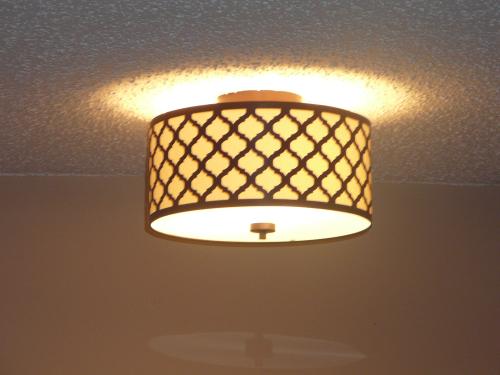Yesterday, I had the pleasure of working with a new client — not in the capacity of declutterologist, but in my role regarding my review and input for home projects.
Growing up, my parents had two HVAC companies and between the two endeavors, my Dad worked for an HVAC company (so did my brother for a little while). My Dad would take me along with him to pick up blueprints for HVAC installations and explain the blueprints to me and then take me to the job site and walk me through it explaining what utility or fixture or wall was going to be located.
As I got older, these site visits became quizzes to see if I could tell from just a framed out house how the final room layout would look and where plumbing, electricity and HVAC would run. No peaking at the blueprints.
When I entered my teens, my poor dad! I didn’t want to do that boring stuff anymore – I wanted him to take me shopping instead! LOL. Well, between him, my brother and my best friend’s boyfriend, instead of always shopping, I was taught how to work on cars. As my Dad said, “You never know if the people you are with would know what to do if you all got a flat tire or had mechanical problems. I want to make sure at least you know what you are doing.” Call me a tomboy. With growing up with my dad taking me fishing, hunting, to construction site visits, and now teaching me about car repairs, it’s no wonder I hated wearing dresses or heels when I was younger — I was such a tomboy!! (thanks Dad by the way 🙂
Back to the present, when my new client contacted me, she was in a panic. The contractor was not performing the duties of a general contractor and not communicating effectively with her. I met with her the next day and had the pleasure of meeting one of the contractor’s project managers – not impressed. Unfortunately there is always going to be a male/female issue when it comes to home improvement / construction skills. I don’t believe I will ever see that change in my lifetime; however, when I typed up for my client the work order list that the contractor SHOULD HAVE PROVIDED so that she could see all the tasks and how they related and be able to communicate with her contractor, that’s where the rubber hit the road and they found out that I may be a Fix It Diva, but I know my way around a remodeling job (and construction site, etc.). My client is in the last week or so of what has been for her and her family over 3 months of frustration. I’m grateful that she allowed me to intervene and help her get on the same communication page with her contractor. Now let’s see if they actually finish the job…stay tuned!




